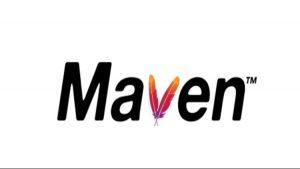Streamlining Your Build Process with Maven Profiles
Maven is a popular build automation tool used by developers worldwide to simplify project setup, manage dependencies, and optimize build performance. One of Maven’s powerful features is the ability to use profiles to configure build and deployment settings for different environments, such as development, testing, and production. In this article, we’ll explore how to use Maven profiles to streamline your build process and manage project resources effectively.
What Are Maven Profiles?
Maven profiles are a way to configure different settings for different build environments. By defining profiles, you can specify build parameters, such as dependencies, plugins, and resource directories, for each environment. This allows you to easily switch between different settings, such as development and production, without modifying your POM file.
How to Use Maven Profiles
To use Maven profiles, you need to define them in your project’s POM file. Here’s an example of how to define a profile for the development environment:
|
1 2 3 4 5 6 7 8 9 10 11 12 13 14 15 16 17 18 19 20 21 22 |
<profiles> <profile> <id>dev</id> <activation> <activeByDefault>true</activeByDefault> </activation> <properties> <env>dev</env> </properties> <dependencies> <!-- add dependencies for the development environment --> </dependencies> <build> <resources> <!-- configure resource directories for the development environment --> </resources> </build> </profile> </profiles> |
In this example, the profile has an ID of “dev” and is activated by default. The profile specifies a property called “env” with a value of “dev” to indicate the development environment. The profile also includes dependencies and resource directories specific to the development environment.
To activate a specific profile during the build process, you can use the “-P” option followed by the profile ID. For example, to activate the “dev” profile, you can run the following command:
|
1 2 3 4 |
mvn clean install -Pdev |
Managing Dependencies with Maven Profiles
Maven profiles can also be used to manage dependencies effectively. For example, you may want to use different versions of a library depending on the environment. To do this, you can define a dependency for each profile, as shown in the following example:
|
1 2 3 4 5 6 7 8 9 10 11 12 13 14 15 16 17 18 19 20 21 22 23 24 25 |
<profiles> <profile> <id>dev</id> <dependencies> <dependency> <groupId>com.example</groupId> <artifactId>example-lib</artifactId> <version>1.0.0-dev</version> </dependency> </dependencies> </profile> <profile> <id>prod</id> <dependencies> <dependency> <groupId>com.example</groupId> <artifactId>example-lib</artifactId> <version>1.0.0-prod</version> </dependency> </dependencies> </profile> </profiles> |
In this example, the “dev” profile uses version “1.0.0-dev” of the “example-lib” library, while the “prod” profile uses version “1.0.0-prod”.
Conclusion
Maven profiles are a powerful tool that can help you streamline your build process and manage dependencies and resources effectively. By defining profiles for different environments, you can easily switch between settings without modifying your POM file. Profiles also allow you to manage dependencies for each environment, ensuring that the correct versions of libraries are used. With these tips, you can use Maven profiles to simplify your development workflow and build more reliable applications.
In conclusion, Maven profiles can greatly improve your development workflow by allowing you to customize your build and deployment settings for different environments. By following the best practices outlined in this article, you can create profiles that manage dependencies, configure resource directories, and activate different settings based on the environment. Whether you’re working on a small project or a large-scale application, Maven profiles can help you streamline your build process and optimize your development workflow. So, give it a try and see how Maven profiles can benefit your project!

